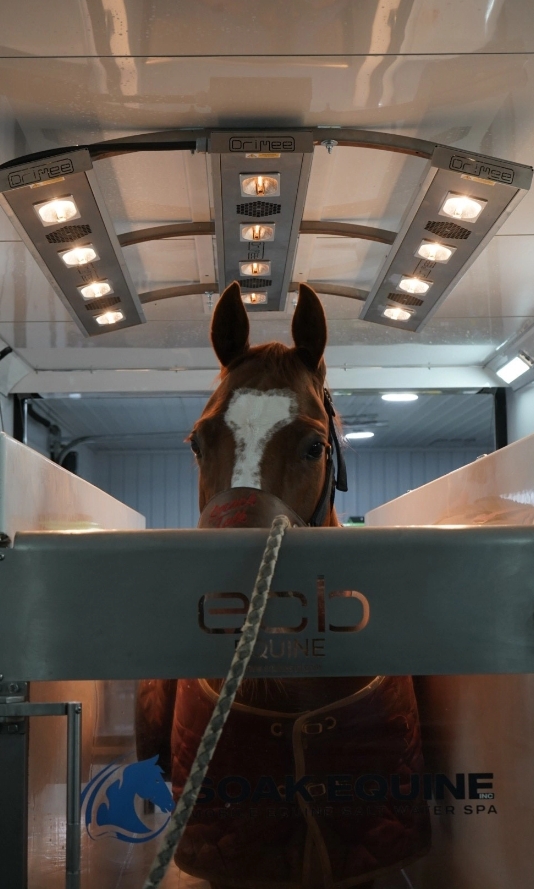SOAK Equine’s massage therapy is designed to help reduce pain and prevent further injuries by utilizing proven techniques that have been helping humans and animals for years. There are many reasons why this noninvasive therapy is becoming increasingly popular.
Equine massage boosts blood circulation, which speeds up the removal of waste and toxins from sore and tired muscles. The compression and release technique used in equine massage enhances circulation in the limbs’ superficial areas. This is especially helpful for stallbound horses prone to lower leg edema, as it encourages both blood and lymph flow.
Massage is a beneficial component of rehabilitation programs. It loosens tight connective tissue, enhancing a horse’s overall movement. The effects are often noticeable right after a session. Additionally, massage increases a horse’s mobility and range of motion, aiding in better jumping and turning abilities and helping the horse achieve peak performance.
A 2016 study on Arabian racehorses confirmed the relaxing effects of massage. The study measured the heart rates of 72 horses during racing season and variability to gauge their emotional state. The experimental group, which trained six days a week and received massages three times a week, showed changes in heart rate that suggested massage helped them become more relaxed and calm.
It can also improve areas of scar tissue, making the tissue more flexible, enhancing the horse’s freedom of movement, and reducing pain. Massage combined with stretching can aid in restoring a horse’s mobility after an injury by easing tension as collagen fibres heal and realign post-trauma.

The preparation of equine athletes is a critical factor in their ability to excel in competitive events. Cold salt hydrotherapy provides a range of advantages specifically tailored to enhance their performance. This innovative therapy not only supports the physical well-being of horses but also addresses key aspects such as:
Yes, equine massage is a valuable part of rehabilitation programs for horses recovering from injuries. It helps by loosening tight connective tissues, thus enhancing movement and facilitating more effective healing. Massage therapy can ease tension as collagen fibres heal and realign after trauma, improving a horse’s mobility and aiding in pain management. It also plays a significant role in the softening and flexibility of scar tissue, further contributing to a horse’s recovery.
During a massage session, horses might show signs of relaxation, such as lowering their heads, licking or chewing, and swaying along with the therapist’s movements. Some horses may even fall asleep. These behaviours are indicators that the horse is responding positively to the massage, experiencing relief from pain and tension, and enjoying the calming effects of the therapy.
Equine massage therapy can significantly enhance a horse’s performance by improving its range of motion and flexibility, essential for jumping and turning activities. The therapy relaxes muscle tissue and increases mobility, allowing horses to move more freely. Additionally, massage stimulates the release of endorphins, which relaxes the horse and contributes to better mental focus and a more content state, thereby improving overall performance in training and competitions.
Massage has a notable impact on a horse’s emotional well-being. A study conducted in 2016 showed that regular massage sessions could reduce heart rate variability in Arabian racehorses, indicating a state of relaxation and calmness. This suggests that massage helps alleviate stress and anxiety, which is particularly beneficial for competitive and racing horses. By promoting relaxation and reducing stress, equine massage contributes to a happier and more cooperative horse.